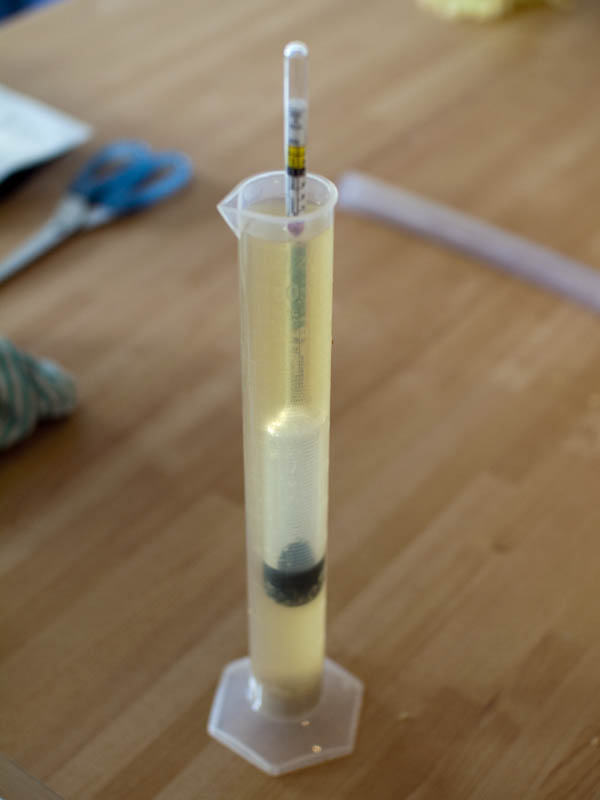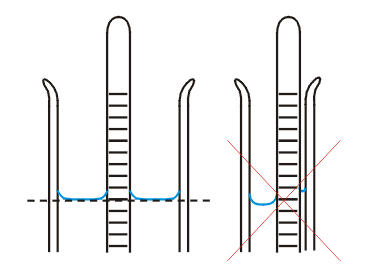How To Use A Hydrometer
One of the tools that is essential to a home brewer aside from a thermometer, is a hydrometer. Knowing how to use a hydrometer is important because it can tell us a lot about the beer, so let’s take a look.
A hydrometer is a simple measuring tool that measures the density of liquids. Plain and simple water from the tap has a base density of zero. It is when you start adding sugar to the water, which is what the brewer is doing by steeping malted grains in water that the density changes. The more sugar present the higher the density of the liquid.
There are a number of things that using a hydrometer will tell you about the wort. The whole purpose of it is to tell you the amount of dissolved sugar in the wort. The first reading you would need to take is before you pitch the yeast in the wort.
How To Use A Hydrometer
All you do is float the hydrometer in the beer. Usually the hydrometer will be supplied with a trial tube for this. Again make sure everything is sanitised before taking a sample from the beer. The hydrometer will float at a certain depth according to the density of the wort or beer. This density is called the gravity and because it is measured before fermentation the reading is the Original Gravity or OG.
Throughout the fermentation the amount of sugar in the wort will decrease as the yeast begin to consume it. This process makes CO2 and alcohol, meaning when you measure the gravity again the hydrometer will sink lower into the beer. Using the gauge on the stem of the hydrometer you will be able to see just how far along fermentation is, usually if you are following a recipe the original and final gravity’s are provided.
One thing to note when using a hydrometer is the level where the beer meets the stem of the instrument. If you look closely you will see the surface of the beer curve up where it meets the stem of the hydrometer. This effect is caused by the surface tension of the beer which is called the meniscus. When you take a hydrometer reading you need to note the level of the beer, not where the meniscus curves up to meet the hydrometer. Although this sounds a little complex it becomes second nature after a few readings.
Calculating Alcohol Content – ABV %
The density of water is 1.000 on a hydrometer, so when sugar is added the gravity reading will increase to say 1.040. When beer ferments there will be sugars in the wort that are non-fermentable this means your gravity will not finish exactly at 1.000 but say 1.010 for example. Using these readings however we can work out the Alcohol by Volume% (ABV) with a simple calculation. What you want to do is work out the difference between the 2 readings so 1.040-1.010 = 0.030 then multiply this by 131 so 0.030 x 131 = 3.93% ABV.
That’s all there is to it. There are calculators on line to do the calculation for you but its pretty simple anyway. The one thing to watch out for though is must Hydrometers are temperature calibrated so will only give the correct reading when at a certain temperature usually 20C. Again there are calculators online to adjust for temperature and hydrometers are usually supplied with temperature conversion charts.
Testing Extraction and Brewing Efficiency
When you brew “all grain” without using any malt extracts the home brewer will need to know how much sugar is being extracted from the malted grain. Using a hydrometer you will be able to tell how efficient the mash was at extracting fermentable sugars from the grain. This is important when you formulate recipes for knowing how much grain you’ll need to use to achieve the desired alcohol content for the beer.
Malted grains have a upper limit as to how much sugar can be extracted under ideal conditions. When we use the malt to make beer we can only extract a certain amount of that, this percentage tells us how efficient the brewing process is and the hydrometer is needed to test it.
If you are only just starting to brew all grain you don’t really need to worry to much about brewing efficiency. It can help down the line as you begin creating your own recipes but to begin with it is much better to just get started, not worrying about numbers.


